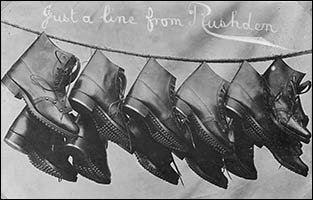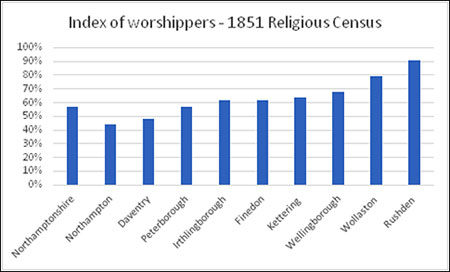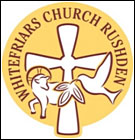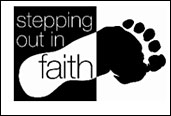|
|||||||||||||||||||||||||
| Andrew Presland, 2022 | |||||||||||||||||||||||||
|
Leathery Lap
|
|||||||||||||||||||||||||
|
|
|||||||||||||||||||||||||
A Walk arranged by members of NIAG and Whitefriars Church. |
|||||||||||||||||||||||||
|
A Leathery Lap of Rushden: a walk as part of Rushden Celebrates on Sunday 12th June 2022 (but will hopefully be useful at other times too) The following notes list the main features on our route that relate to boot & shoe manufacturing, but aren’t necessarily exhaustive. Details of other sources are given towards the end. · Hall Park – Rushden Museum includes a permanent section on boot & shoe making, and loans out artefacts (open May to October, Sat and Sun, 2 to 4pm · Skinner’s Hill (technically part of Wellingborough Road): Claridge Court is on the site of J&C Claridge Ltd, founded by William Claridge in early 1860s. Factory demolished 2015. · Church Street – no 30 (now Pizzeria Venezia) was John White’s second factory from 1920 to 1922 (blue plaque) · John Street – Fred Corby’s tannery was where the car park now is. · Alfred Street – high brick wall is where the Ritz Cinema replaced John Cave’s (fourth) factory following a (second) major fire, in 1901. The fire also crossed the road and destroyed part of Alfred Steet School. · College Street: Wilko’s is on the site of John Cave’s fifth factory, which was then used by Eaton & Co from 1964 until closure and demolition, then replacement by a Budgen’s supermarket in 1974. · High Street (part): near Nationwide: site of (very large) Rushden Cottage – home of John Cave & family from 1882. · Leaving High Steet at Hamblin Court: across Rectory Road Health Clinic carpark to two-storey workshop at back of 17 Queen Street: recognised by Northamptonshire Industrial Archaeology Group (NIAG) as a noteworthy example of a three-bay workshop, probably used by shoe outworkers. · Rectory Road: corner of Albert Road – used by Ebenezer Claridge & Sons until 1930s and then Denton Brothers until they moved to Irchester Road until approx. 1980. Church & Co from Northampton currently have a closing room off Albert Road · Rectory Road/Victoria Road junction: three-storey factory on High Street side used by Joseph Knight, then Knight & Brightwell then leather merchants. Other side of Rectory Road: Epic House was Rushden Boot & Shoe School from 1927 to 1973. · Crossing John Clark Way to footpath past station to North Street: Rushden Station was built in 1894 – largely to meet the needs and opportunities of boot & shoe manufacture and closed to passengers in 1959 and goods in 1969. Now a transport museum: https://rhts.co.uk/visitor-information/rushden-transport-museum/ · In North Street beyond Shirley Road: next to Woods Court: three-storey factory occupied by CK Woods from 1928 to 1980s. Converted to apartments approx. 1998. · Beech Road, off Higham Road – 1950s former factory replaced a building destroyed by fire in 1955. Originally Alfred Lilley, then HT Mackness, leather and shoe component suppliers, 1924 to 2002. Now Steptronic Footwear, makers of high quality footwear. · Higham Road/Lime Street – Grade II listed art deco building designed by Sir Albert Richardson and built in 1938 for John White and used until 1991. Surrounded by a large garden. Now apartments, after becoming derelict after closure. · John White had nine factories employing 2,000 workers by 1941. It later became part of the Ward White Group: in the 1970s, the Rushden branch of the Nat West bank was said to be one of the biggest in England due to having the Ward White Group as a customer: the fifth most senior staff member there was as senior as most branch managers due to the responsibilities involved. · Across Higham Road to Prospect Avenue – no shoe-related buildings, but evidence of strong Ukraine support at the time of writing (most houses have a Ukraine flag or poster). · Footpath over railway track, and then along Greenway to John Clark Way: track bed of railway that terminated at Higham Ferrers station: further evidence of impact of boot and shoe manufacture on the landscape, although the industry was less extensive in Higham, due partly to landowners (e.g. Duchy of Lancaster) being less enthusiastic than in Rushden. · Windsor Road to Upper Queen Street/Cromwell Road corner: former Grenson factory: Grade II listed: built in 1895 for William Green, who was previously in High Street South. Grensons moved to Crown Park in 2013 · Down Queen Street and along an alley to Portland Road: Fred Hawkes’ former shoe machinery works – with paintings of its overseas activities in 1930s or 40s in its foyer. Now a footwear components supplier. Opposite: Alfred Sargent: built in 1915 and still producing footwear here. · Along Kings Road (first council housing in Rushden), King’s Place and Robinson Road: 42 Robinson Road was the (very small) factory of Crispin Espin, a leather offal merchant. In 1936 his son joined the business, and they became leather merchants after WWII. · Turn right on to Newton Road towards the town centre, then left into right of way at back of Grove Road houses just after Escape Rooms, leading to Manton Road: as we approach Manton Road, the two storey building to our right was originally three storey, and Knight & Laurence’s factory until 1982. · Continuing along the bridleway to York Road: the block of apartments dated 1898 and now called Cobblers’ Lofts was originally Joseph Knight’s factory and then Bignells until the 1950s. · Turning left and going up York Road to Grove Road: a blue plaque on no 51 (next to former Robinson Bros factory) shows that this was the birthplace of writer HE Bates, whose autobiography the Vanished World vividly describes Rushden streets of the early 1900s, with terraced housing interspersed with shoe factories, chapels and shops. · Turning left along Grove Road, we see the end of Essex Road, where no 15 Essex Road bears another blue plaque about H E Bates, this being where he lived from 1914 to 1931, when he married Madge Cox and moved to Kent · Turning left into Denmark Road gets us to a two-storey former factory at the top on the right, built about 1900 and used by shoe manufacturers Horace Wright, Dilks and Martin and then Gilbert & Sons. · Joining Oswald Road and turning right allows us to take a footpath into Rushden Cemetery, the resting place of many boots and shoe manufacturers and their employees, as well as other Rushden dignitaries. Families represented in the area near the Chapel include Claridge, Cave and Knight. · Leaving the cemetery visa the exit to Harborough Road – takes us past the site of George Selwood’s single storey factory at the top on the right, then a three storey modern replacement to a factory at no 68 that was originally Henry Bull and George Warner, boot & shoe manufacturers and then Clifford Collins leather merchant until at least 1999. On the opposite side at no 21 is a three storey factory converted to apartments, used previously by George Selwood (again), the Tecnic Shoe Co and Horace Wright. The odd mixture of buildings at no 7 (now Woodward, carpenters) has previously been used for shoe manufacture, including W Smart up to 1967. · Turning right: Park Road is where many shoe manufacturers worshipped, rather than made shoes: there have been at least three Baptist Church buildings in Park Road or nearby Little Street since the first one was founded in 1722 (300th anniversary due to be celebrated at Park Road Baptist Church in September 2022) - e.g. John Cave was also a deacon of the Old Baptist Church for 23 years, and Fred Corby was Secretary of Park Road Baptist Church for many years. The Knight family were also strong Baptists, with Fred Knight having a large three storey factory at 60 Park Road, built in 1889 and demolished in 2005 and is now Knight’s Mews, a complex of flats and houses. · Turning left into Albion Place takes us by W Smart and Son – still producing Footwear Components -n the corner, having been at this site since about 1936, · The alley leading to High Street South from the bottom of Albion Place takes us past the former three storey (and basement) factory of William Green & Sons, built in 1874. As Grensons, it moved to Queen Street in 1895, as seen earlier. · We continue along High Street South until we reach the gates to Hall Park, leading back to Rushden Hall. ======================================================= This isn’t the only heritage walk around Rushden: · There are routes of nine walks in the town, including ‘Factory Walk North’ and ‘Factory Walk South’ and a ‘Blue plaques’ walk on the Rushden Heritage website at https://www.rushdenheritage.co.uk/leisure/walks-intro.html ; and there is · a heritage trail on the Town Council website at https://www.rushdentowncouncil.gov.uk/tourism.html Some Rushden shoemaking statistics: · Rushden grew from a village of just over 800 people in 1801 to a town of over 12,400 in 1901, largely due to the shoe trade – an increase of over 1,400% - much bigger than anywhere else locally (from Census statistics) · The peak year for the shoe trade was 1920, when trade directories recorded 106 shoe factories and workshops in Rushden (https://www.rushdenheritage.co.uk/shoetrade/shoetrade-riseandfall.html - going up from 17 in 1883 to 5 in 2007 - and up to 6 as at 2022? (Churches, DB Shoes, Grensons, Sanders & Sanders, Sargents and Steptronic Footwear) · In 1950, almost 75% of Rushden’s working population worked in shoe factories, compared with 45% in Northampton (Northamptonshire – its Land and People, PJ Harris and PW Hartop, 1950) · Also in 1950, Rushden with Higham Ferrers was the second largest shoemaking town in the county after Northampton (Harris and Hartop)
A brief reflection: was this industrial growth connected to being top of the county league in the 1851 Religious Census?
Index of worshippers
The 1851 Religious Census of Northamptonshire, ed Graham S Ward, Northamptonshire Record Society, 2007 Why was attendance so high? · There were five churches/chapels for 1,460 people – including three Baptist chapels due to a split. · This seems to have attracted more attenders instead of cutting a fixed cake into thinner slices · Migration from north Bedfordshire – with second highest attendances in England Why so much shoemaking? · Fertile ground for non-conformist boot & shoe entrepreneurs? · Land was harder to obtain for workshops and factories in Irchester, Higham Ferrers etc · Pay levels were lower in villages such as Rushden compared with Northampton, which was, in turn, cheaper than in London. ================================= Further information
========================== Organised by Whitefriars Church, Rushden, Countryside Walks group – walking 3 to 4 miles
|
|||||||||||||||||||||||||
|
|
|||||||||||||||||||||||||



